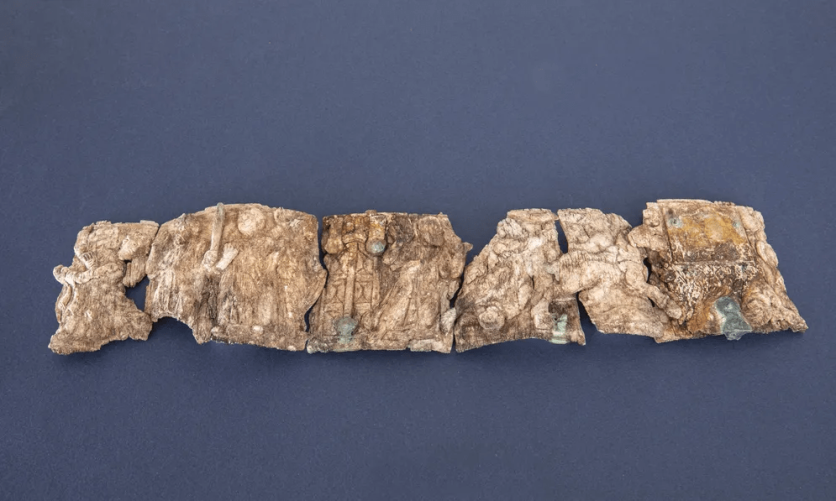Archaeologists in Austria have unearthed a 1,500-year-old Christian reliquary in a late antique hilltop settlement in the southern region. Researchers from the University of Innsbruck have been conducting excavations there since 2016.
The team, led by archaeologist Gerald Grabherr, found the reliquary in an early Christian church on the Burgbichl in the municipality of Irschen.

1,500-Year-Old Christian Reliquary Found in Austria
The discovery started on August 4, 2022, when the researchers uncovered a marble shrine, measuring approximately 20 by 30 centimeters, beneath the altar in a side chapel. Inside this shrine was a heavily fragmented ivory box, or pyx, adorned with Christian motifs.
The researchers noted that such reliquaries are considered the most sacred parts of a church and are often taken away when a church is abandoned. However, this one was left behind, making it the first of its kind to be discovered in an archaeological context in Austria.
The pyx had absorbed moisture and became very fragile. Ulrike Töchterle, head of the restoration workshop at the University of Innsbruck, explained the challenges of conserving the ivory artifact.
She noted that ivory stored in such conditions can absorb moisture, become soft, and easily damaged. Hence, the team worked to conserve the individual pieces of the pyx to a state suitable for scientific analysis.
The high humidity within the marble shrine posed a risk of condensation and mold, necessitating a cautious approach to the drying process. Although the larger parts of the pyx are deformed and cannot be restored to their original state, researchers are working on a 3D reconstruction to better understand its design and function.
What's Depicted on the Pyx?
Initial assumptions by the archaeologists suggested that the shrine might contain the remains of a saint. However, the arrangement of the fragments indicated that the pyx was already broken in late antiquity and was buried as a sacred object due to its contact with a relic.
One end of the pyx depicts a figure at the foot of a mountain, with a hand emerging from the sky to place something between the person's arms. According to Grabherr, this could likely represent Moses receiving the laws on Mount Sinai.
Another scene shows a man on a chariot being pulled into heaven by two horses, interpreted as the Ascension of Christ. Further investigations into the reliquary are ongoing. Researchers aim to determine the exact origin of the marble and the ivory using stable isotope analyses.
The metallic components of the pyx, such as the hinges, are also being examined, along with the glue used for the ivory. Wooden parts found in the marble box are also being studied to identify the type and origin of the wood.
"The pyx was presumably also seen as sacred and was treated as such because it was in contact with a relic. The archaeological and art-historical significance of the pyx cannot be denied," Grabherr said in a press statement.





